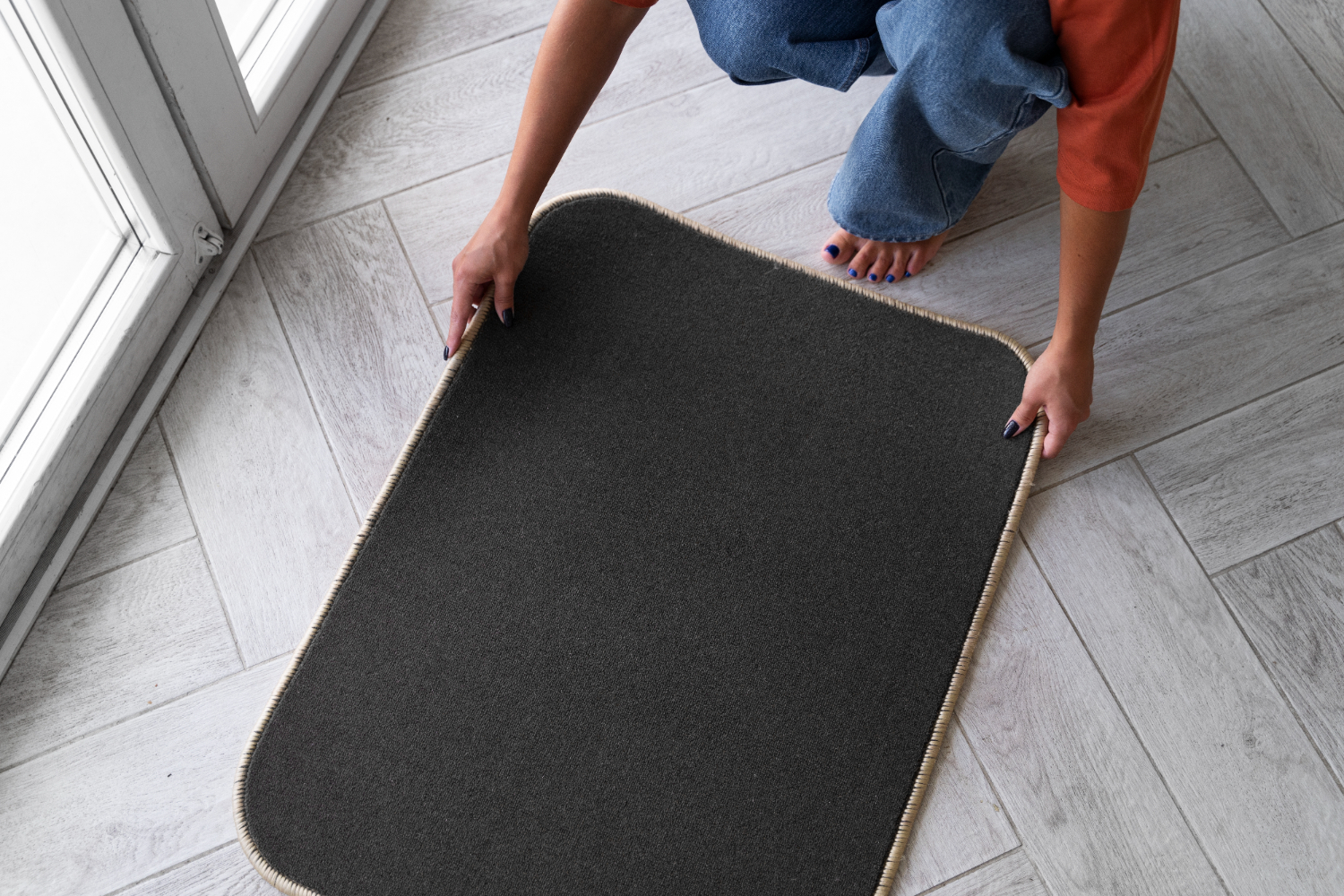Conductive mats, also known as ESD mats, play a crucial role in protecting sensitive electronic equipment and workers from electrostatic discharge. Before making a purchase, it is important to have a good understanding of the basics of conductive mats to ensure you choose the right one for your needs. In this comprehensive guide, we will cover everything you need to know about conductive mats, including their purpose, types, features, and maintenance. This will help you make an informed decision and invest in a high-quality conductive mat that will effectively prevent damage from static electricity and keep your workplace safe. So let’s dive in and explore the world of conductive mats!
To provide a safe path for electrostatic charges to flow through and dissipate
Conductive mats play a crucial role in protecting sensitive electronic equipment from damage caused by electrostatic discharge (ESD). They provide a safe path for static charges to flow through and dissipate, preventing the buildup of electricity that can harm equipment and cause discomfort to workers. By offering a low-resistance path, conductive mats ensure that any static charges are quickly neutralized. This makes them an essential tool in industrial, manufacturing, and laboratory settings where static electricity is a common threat. Without a proper conductive mat, ESD can lead to costly equipment failures and potential safety hazards. It is important to understand the purpose of conductive mats and choose the right type for your specific needs to ensure maximum protection for your equipment and employees.
Dissipative, conductive, and dual-layer
Conductive mats come in three main types: dissipative, conductive, and dual-layer. Each type has its own unique properties and applications.
Dissipative mats have a higher resistance and are best suited for areas with low voltage equipment. They allow for a slower discharge of static electricity, making them ideal for more delicate equipment.
Conductive mats, on the other hand, have a lower resistance and are suitable for areas with higher voltage equipment. They allow for a faster discharge of static electricity, making them more effective in preventing damage to sensitive equipment.
Dual-layer mats combine the properties of both dissipative and conductive mats, making them versatile for various applications. They offer both slow and fast discharge capabilities, making them suitable for a wider range of equipment and environments.
When choosing the right conductive mat for your needs, consider the type of equipment being used and the voltage levels in your work area. It is also important to consult with an expert or supplier to ensure you are selecting the most suitable mat for your specific needs.
Why it is essential for proper dissipation of static electricity
Proper dissipation of static electricity is crucial for the effective functioning of conductive mats. When static electricity builds up, it can cause damage to sensitive electronic equipment and can also pose a safety risk to workers. Conductive mats provide a safe path for the static charges to flow through and dissipate, preventing any potential harm.
Without proper grounding, a conductive mat cannot effectively dissipate static electricity. This is why it is essential to ensure that the mat is properly grounded. This not only protects equipment and workers but also maintains the overall effectiveness of the mat. Neglecting proper grounding can lead to an increase in static electricity and potential risks.
In addition to grounding, other features such as size, thickness, and material also play a vital role in the dissipation of static electricity. A larger mat can cover a larger area and accommodate more equipment, while a thicker mat provides better durability and comfort. Choosing the right material, such as rubber or vinyl, can also impact the effectiveness of the mat in dissipating static electricity.
Types of Materials Used in Conductive Mats
Conductive mats are available in a variety of materials, but the most common ones are rubber and vinyl. Rubber offers better resistance to chemicals, making it suitable for industrial and laboratory settings. On the other hand, vinyl is more cost-effective and can be found in many manufacturing environments. When choosing the material for your conductive matting at Floor Mat Specialists stores, consider the specific needs of your workplace and the potential hazards that need to be mitigated.
Aside from rubber and vinyl, there are other materials that may be used for conductive mats, such as foam or carpet. Foam is lightweight and provides cushioning, making it ideal for anti-fatigue mats. Carpet, on the other hand, offers a softer surface and can be more aesthetically pleasing. However, it may not be suitable for heavy equipment or areas with high foot traffic.
Each material has its own pros and cons, so it is important to carefully evaluate your needs before making a decision. Consider factors such as durability, comfort, and resistance to chemicals and choose the material that best fits your specific requirements.
Maintenance Tips for Conductive Mats
Proper maintenance is crucial for the effectiveness of conductive mats. Here are some tips to keep your ESD mat in top condition:
- Clean regularly – Conductive mats should be cleaned on a regular basis to prevent buildup of dirt, dust, and grime. Use an ESD-approved cleaner to avoid damaging the mat’s properties.
- Use mild cleaning products – Avoid harsh chemicals or abrasive materials when cleaning your conductive mat. Stick to mild cleaners and non-abrasive cloths to maintain the mat’s integrity.
- Check for damage – Regularly inspect your conductive mat for any signs of damage, such as tears or punctures. Replace any damaged mats immediately to avoid compromising their effectiveness.
- Be mindful of placement – Do not place heavy or sharp objects on the mat, as this can cause damage. Keep the mat clear of clutter and ensure it is properly grounded.
Remember, a well-maintained conductive mat is essential for protecting your equipment and workers from the risks of electrostatic discharge. Follow these tips to ensure your mat stays in top condition.
How to Choose the Right Conductive Mat for Your Needs
It is important to carefully consider your specific needs before purchasing a conductive mat. Here are some tips to help you choose the right one:
- Evaluate your environment: Consider the voltage of the equipment in your workspace and choose a mat with the appropriate resistance level – dissipative, conductive, or dual-layer.
- Measure your work area: Make sure the mat you choose is large enough to cover the entire work area and accommodate any equipment that will be placed on it.
- Consider durability and comfort: The thickness of the mat is important for both durability and comfort. Choose a thickness that suits your needs.
- Think about the material: Rubber and vinyl are the most common materials used in conductive mats, but there are other options available. Consider the pros and cons of each material and choose the one that best suits your environment.
- Don’t forget about grounding: Grounding is essential for proper dissipation of static electricity. Ensure that your mat is properly grounded to effectively protect your equipment and workers.
Remember to consult with an expert or supplier for further guidance in choosing the right conductive mat for your needs. Investing in a high-quality mat will not only protect your sensitive equipment but also ensure the safety and comfort of your workers.
Conclusion
In conclusion, conductive mats are essential tools for protecting sensitive electronic equipment and ensuring the safety of workers in industrial, manufacturing, and laboratory settings. With their ability to dissipate electrostatic charges and prevent damage from static electricity, these mats play a crucial role in maintaining the functionality and longevity of equipment. When choosing a conductive mat, consider factors such as type, size, thickness, material, and grounding to ensure it meets your specific needs. Regular maintenance, including cleaning with ESD-approved products, is vital for the effectiveness of the mat. Take the time to understand the basics of conductive mats and consult with experts to make an informed decision. Invest in a high-quality conductive mat to provide the best protection for your equipment and workers. Remember, prevention is always better than cure when it comes to electrostatic discharge.



